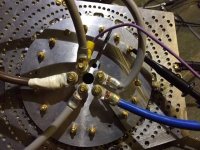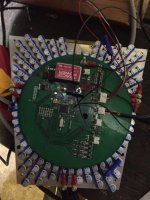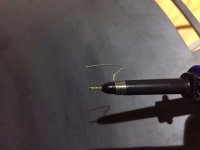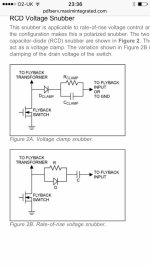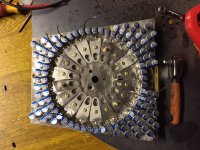My scope does have a save bitmap option, but I don't know how to use it

and I need to find a memory stick.
Njay: Usually there's a suggestive menu button, you set the output type and go save choosing a filename (or let it choose for you). Memory stick or your smartphone, if you use one.
With the scope probe I have, the closest I could get it was using the attachment shown below. I put this across the S-D of the low side. Is this acceptable?
Njay: From my point of view, yes. If you can get it closer then better, but what you have is the "minimum" you should do.
I might have a lead at work with the ground ring closer to the probe tip which I can get directly across the FET.
The biggest spike I could capture is below.
Njay: Huge!
With the trigger higher it didn't capture, I can't be 100% sure on the current, but I saw 230A on the clamp meter round the battery lead,
Njay: What matters is phase (motor) current, and it can be several times higher than battery current.
The hardest test you can do on the controller is to block the rotor and give it full throttle. You can make a "double pulse" test so you have constant, and therefore comparable, test conditions (https://endless-sphere.com/forums/viewtopic.php?f=30&t=63983).
so it would be in excess of this as the meter is slow to respond and the current reduces as the motor RPM increases. So I think this is about as bad as the ringing gets.
Should I be taking the controller apart and increasing the gate turn on resistors, or should I be moving onto a higher voltage?
View attachment 1


